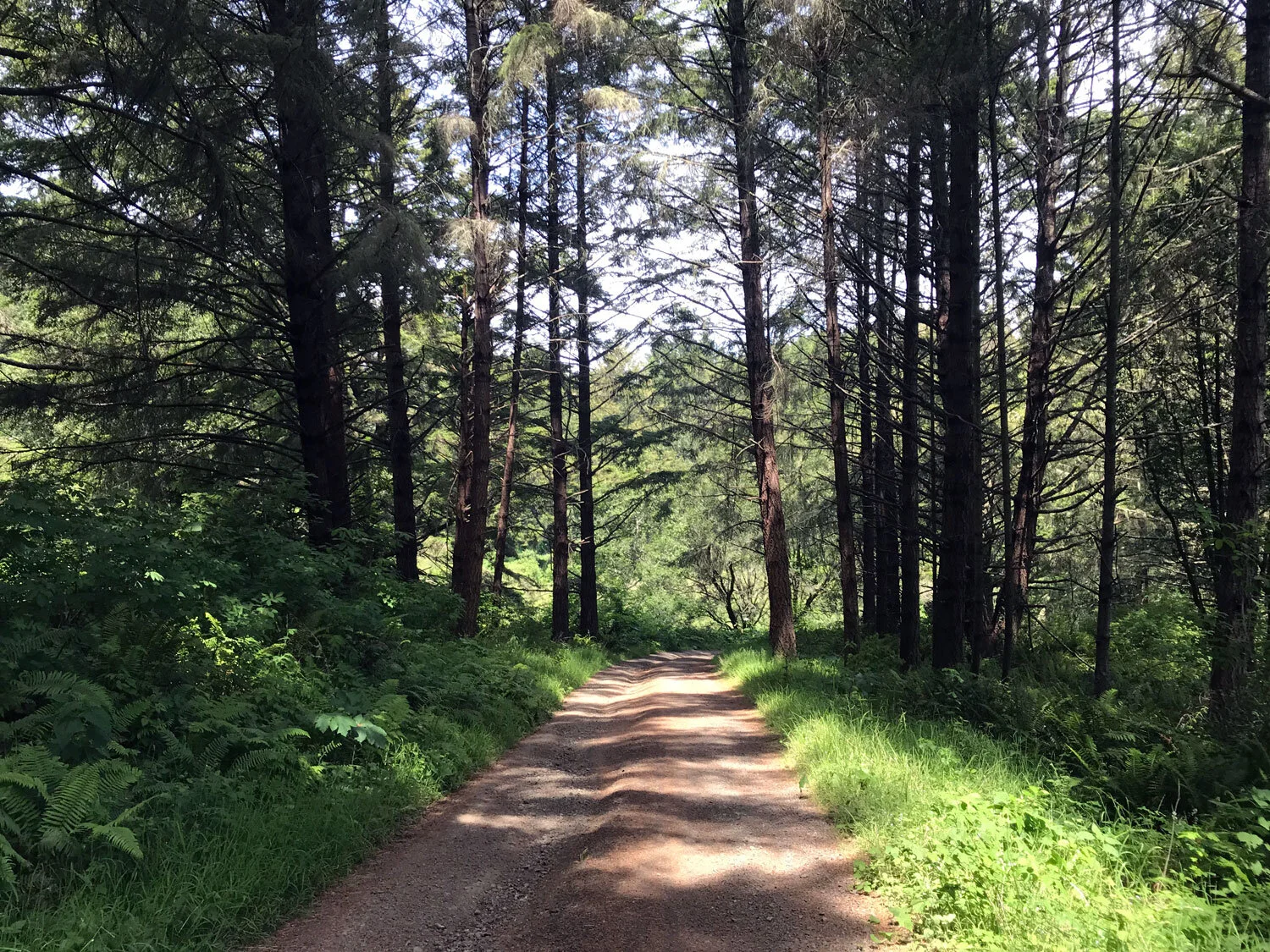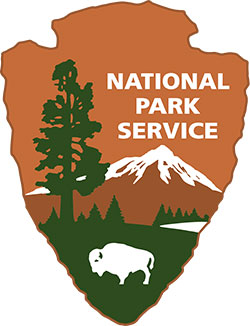Glen Trail
Trail length: 2.9 miles lollipop loop, plus 3.1 miles each way from Bear Valley Trailhead
Time: 1-2 hours for loop, plus 2-4 hours roundtrip on Bear Valley Trail.
Terrain: bay, fir forest
Restroom? No
Parking: No
Dates visited: 12/28/18, 5/8/20
Favorite plants on this trail: mushrooms
The Glen Trail begins three-quarters of the way to the end of the Bear Valley Trail, 3.1 miles from the Bear Valley Visitor Center. A fast option for getting to the Glen Trail is to bike the Bear Valley Trail and park your bike in the rack opposite the Glen Trail. Bikes are not allowed any further on the Bear Valley Trail. Between the bike rack and the Glen trailhead, make a stop at the log covered in Rosy Conk (Rhodofomes cajanderi), a bracket funghi with a rosy pink hue (see photo below).
You’ll start your trek by crossing a wooden bridge over the Bear Valley Creek. It’s moist in this area and the trail is covered in Stinging Nettle (Urtica dioica) (see photo below) so be careful not to brush against the nettles. They can sting even through pants. A paste made by chewing plantain leaves and putting it on the sting is said to take away the pain. I tried it once but was not successful. Poison oak is also plentiful so at times you will have to make the hard decision between brushing against nettle or poison oak.
In winter, the Glen Trail is full of mushrooms. In springtime, it’s fresh and bright green with new ferns such as Lady Fern (Athyrium filix-femina), Red-berried Elder (Sambucus racemosa), Beaked Hazelnut (Corylus cornuta), Trailing Blackberry (Rubus ursinus) and Thimbleberry (Rubus parviflorus). Spring flowers include Star-flowered Lily-of-the-Valley (Maianthemum stellatum), Western Star Flower (Lysimachia latifolia), Pacific Trillium (Trillium ovatum), Fringe Cups (Tellima grandiflora), Hooker's Fairybells (Prosartes hookeri) and Douglas Iris (Iris douglasiana). Everything is covered in the meandering vines of California Manroot (Marah fabacea)!
A cluster of Glen trails
The Glen Trail consists of numerous segments: Glen Trail, Glen Camp Loop, and two short trails that lead to the Coast Trail — Coast/Glen Spur North, Coast/Glen Spur South. Both the Glen Camp Loop and the Glen Trail have small gravel sections where biking is allowed. My favorite segment is the Glen Trail bounded by the Glen Camp Loop on both ends - that is, the beginning and middle of the loop. The Glen trails are the only trails that are difficult to distinguish on the official National Park Service Point Reyes map. See the Redwood Hikes Press detail below. The Point Reyes map from Redwood Hikes Press is my favorite.
Loop: Bear Valley Trail to Glen Trail to Coast/Glen Spur North to Coast Trail to Bear Valley Trail (9.8 miles)
Starting at the Bear Valley Trailhead, hike or bike 3.1 miles to the Glen Trail. Hike 0.5 miles to the intersection of the Glen Camp Loop and Glen Trail. Stay right on the Glen Trail another 0.4 miles then turn right onto the Coast/Glen Spur North. Hike 0.3 miles on the Coast/Glen Spur North to the Coast Trail. Turn right and hike along the Coast Trail for 1.5 miles to the Bear Valley Trail. Hike 4 miles back to the Bear Valley Trailhead (or if you are biking, hike 0.9 miles back to the bike rack at the intersection of the Glen Trail, and bike back 3.1 miles.)
detail from Point reyes map by redwood hikes press
Glen Camp and Biking
Bikes are allowed on the Glen Trail in the gravel section between the Stewart Trail and Glen Camp. It’s about a 5 mile ride from Five Brooks to Glen Camp and the trail crests Inverness Ridge so expect lots of uphill until firtop. Bikes are not allowed anywhere else on the Glen Trail. If you park your bike on the Bear Valley Trail, it’s a 1.5 mile hike to Glen Camp.
Volunteer Opportunity: Habitat Restoration
Join the Habitat Restoration Program (HRP) at Point Reyes National Seashore to help protect and restore endangered plant and wildlife habitat at Abbotts Lagoon, the Lighthouse Bluffs, the Estero area, and other high-value habitat areas at Point Reyes National Seashore. Visit some of the most beautiful areas in the park and learn about local plant ecology while you work alongside park staff to carry out ecological restoration projects. Get involved, meet new people, and make a positive impact on your environment!












































































